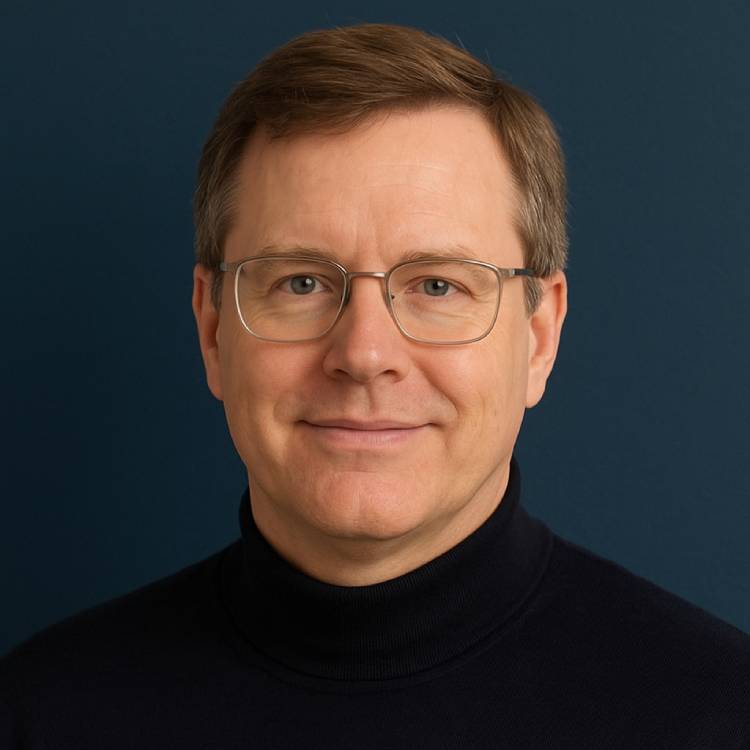What Is Copy Trade and How Does Copy Trading Work?

Copy trading is one of the easiest ways for both new and experienced investors to make the most of opportunities in the financial markets. mimic trading enables you instantly mimic the transactions of professional traders instead of spending hours looking at charts or studying complicated trading systems. This means that your trading account copies what another trader does, so you can copy their trades in real time.
Copy trading is a flexible way to trade that lets you use effective tactics without having to spend a lot of time learning them. It's great for people who are just starting out or who don't have time to handle their portfolios full-time.
The global copy trading business is expected to be worth more than $5.6 billion by 2025, with more than 14 million people using different trading platforms to take part. In the previous year, about 37% of new investors who have entered the forex or crypto markets have used some type of copy or mirror trading.
Expert opinion: "Copy trading is changing quickly in 2025, with platforms getting more advanced and focused on users. Elena Brooks, Chief Analyst at FinTrend Global, adds, "The barrier to entry has never been lower."
Copy Trading Explained: What Is Copy Trading?
Copy trading is a type of automated trading in which your account copies the trades of another trader, usually someone with a good trading history and a track record of success. Once connected via a copy trading platform, every trade made by the trader you follow (also called a signal provider or master trader) is automatically duplicated to your account.
There are three primary groups involved:
- Signal Provider (Experienced Trader): A trader whose deals are being imitated.
- Copy Trader (Investor): The person who uses copy trading to copy trades.
- Broker or Trading Platform: The platform that makes it possible for automated trading to happen.
To start copy trading, you just choose a trader to copy based on their trading style, performance, and risk tolerance. Many systems show a trader's full trading history, which makes it easy to choose someone who shares your financial goals.

How Does Copy Trading Work on a Trading Platform?
Copy trading platforms allow investors to automate their trading activity by following trading signals from expert traders. Here's a simpler way to do it:
- Open a trading account with a broker that lets you replicate other traders.
- Pick a trader to copy based on their technique, trading signals, and results.
- Choose What You Want: Set a budget and figure out how much risk you're willing to take.
- Automatically Copy Trades: The system will copy the trades of the trader you follow, but it will change them based on the amount of your account.
According to 2025 industry data, approximately 62% of copy traders employ automated platforms that allow them to follow numerous traders at simultaneously, optimizing portfolio diversity and decreasing idle money.
"Automation is the key," says an expert. "Modern platforms let retail investors act like hedge funds by scaling risk while keeping things clear," says Marco Nguyen, Senior Strategist at Digital Alpha Markets.
Copy Trading in Crypto and Forex Trading
Copy trading started in the forex market, but now it's utilized a lot in equities, commodities, and crypto. Copy trading is popular among cryptocurrency investors since trading in this market can be quite technical and move quickly. You can learn from seasoned crypto traders by replicating what they do without having to know a lot yourself.
A new poll suggests that copy trading that focuses on cryptocurrencies has become very popular. In early 2025, more than 5 million people were doing crypto copy trades.
Many platforms let you filter and follow traders that only trade in cryptocurrencies if you only want to focus on crypto.
How to Start Copy Trading on a Platform
To begin copy trading, do the following:
Get a live trading account with a platform that lets you copy trades.
Connect your account to the copy trading platform.
Browse Traders: Use filters to identify traders based on returns, trading style, markets traded (forex, crypto, etc.), and risk profile.
You can customize your investment by deciding how much you want to put in and how much you are willing to lose on each trade.
Click "Copy" and let the platform do the work of copying the trades.
You can spread your risk by mimicking a number of traders who use different trading tactics or work in different financial marketplaces. You can also stop or pause copying at any time.
Social Trading vs Copy Trading: Understanding the Difference
People commonly use the terms "social trading" and "community trading" to mean the same thing, however social trading is more about learning and community. Traders on social trading platforms discuss strategies, market analysis, and insights, but trades don't happen automatically. You have to determine for yourself whether or not to take their advise.
Main differences:
- Copy Trading: fully automated; copies deals.
- Social Trading: Manual; needs active participation and personal trading judgments.
As younger traders look for both education and investment opportunities, social trading platforms are growing by more than 25% each year.
Expert note: "The social aspect appeals to Gen Z and Millennials. Kristof Meyer, CEO of SocialTrade.io, says, "It's more collaborative and less scary than traditional trading."
Mirror Trading vs Copy Trading: Which Automated Trading Style Fits You?
Mirror trading is a variant of copy trading that focuses on mimicking algorithmic trading methods rather than the activities of people traders. Professional analysts typically come up with these tactics, and they run on their own.
- Key Points About Mirror Trading
- Trading that happens automatically based on set rules.
- Offers diversification across several asset classes.
- Doesn't depend on how one trader acts.
According to a fintech research from 2025, mirror trading tactics already make up around 20% of all automated trading volumes in retail investor marketplaces.
Benefits of Copy Trading for Today's Investor
There are a number of benefits to copy trading:
- Simplicity: No need to make your own trading decisions.
- Time-Saving: Great for people who don't have time to trade on their own.
- Diversification means putting your money into diverse traders, asset classes, and techniques.
- Transparency: See the full trading history, risk measures, and profits of each trader.
- You can use copy trading even if you're new to trading or have never traded before.
According to a survey of the business in 2025, more than 68% of copy traders think that the best thing about it is that it makes trading less stressful. The second best thing is that they can use professional tactics.
Cons of Copy Trading: What to Watch Out For
Copy trading, like any other way to invest, has risks:
- Choosing the Wrong Trader: Just because you did well in the past doesn't mean you'll do well in the future. Consider whether you comprehend the trader’s strategy.
- Market Risk: Copy trading doesn't stop the market from going up and down. When you trade CFDs or other complicated instruments, you could lose money.
- High Risk of Losing Money Quickly, Especially When Leverage Is Used. Many accounts lose money when they trade because they don't manage their risks well.
- Extra Fees: Some traders charge fees for performance or subscriptions.
- Limited Control: When you replicate a trader, you give up the ability to make trading decisions yourself.
Around 64% of copy trading accounts are expected to have at least one monthly drawdown of more than 10% in 2025. This shows how important it is to have risk controls in place.
Warning from an expert: "A lot of first-time copy traders don't realize how big of a deal drawdowns are." Anna Vasquez, Head of Risk Management at NeoTrade, adds, "It's very important to set stop-loss limits and check your account often."
Building a Smart Copy Trading Strategy
Copy trading lets you automate deals, but it's still a good idea to have a basic copy trading plan in place:
- Know the Markets: Find out what kinds of financial markets the trader you mimic works in, such forex, crypto, or commodities.
- Set Clear Risk Limits: Most platforms let you set a maximum loss or drawdown limit.
- Assess Leverage Use: High leverage can enhance profits—but also the risk of losing money suddenly.
- Keep an eye on your portfolio: Even if your trades are automated, it's a good idea to check your portfolio often.
- Diversify: Put your money into traders who use different trading methods and work in different markets.
Data from Q1 2025 shows that consumers who diversified across at least three trading strategies were 42% less likely to encounter a full account stop-out.
Is Copy Trading Profitable? Can You Make Money?
Copy trading can be profitable, but it all depends on the trader you follow and the state of the market. Some investors make money all the time, but others lose money, especially when the market is unstable.
Some of the biggest risks are:
- Market Risk: No matter what method you adopt, sudden swings in price might lead to losses.
- Liquidity Risk: In some markets, you might not be able to buy and sell at good prices.
- Systemic Risk: Big political upheavals or economic crises can have an effect on all markets.
Recent 2025 data reveal that the average annual return for the top 10% of copy traders around the world was between 12% and 27%, depending on the type of asset and how much leverage they used.
"Copy trading can give you steady returns if you do it with discipline and a clear plan," says Thomas Ricci, a market analyst at eBroker Trends.
Copy Trading Glossary for Beginners and Copy Traders
- Fixed Size: Choose how much to deposit in each trade by hand.
- Mirror Master Size: Make the same trade size as the merchant.
- Mirror Master Risk: Set your risk level to match the trader's dependent on how much money you have.
- Max Drawdown (MDD): The most money you can lose before you have to cease trading.
- Warning threshold: A notification is sent when losses hit a certain threshold.
- Soft Stop: Stop replicating new transactions when a particular amount of money is lost.
- Hard Stop: If you hit the loss limit, you must close all transactions and stop copying.
Final Thoughts on Using a Copy Trading Platform
Copy trading is a simple technique to get into financial trading without having to learn everything overnight. It lets investors automate deals, spread out their money, and use the abilities of more experienced traders.
Even so, copy trading is risky. Think about whether you know how the system works and whether you can afford to take the chance of losing money quickly because of leverage or market volatility.
More than 72% of retail investors said they would tell others to emulate trade in 2025, but 39% said they didn't realize how risky it was in the first three months.
Last piece of advice: "Copy trading isn't about copying without thinking. Elena Brooks says to treat it like a controlled strategy: watch, judge, and change.
Copy trading can be a useful tool on your investment path if you use it carefully.




